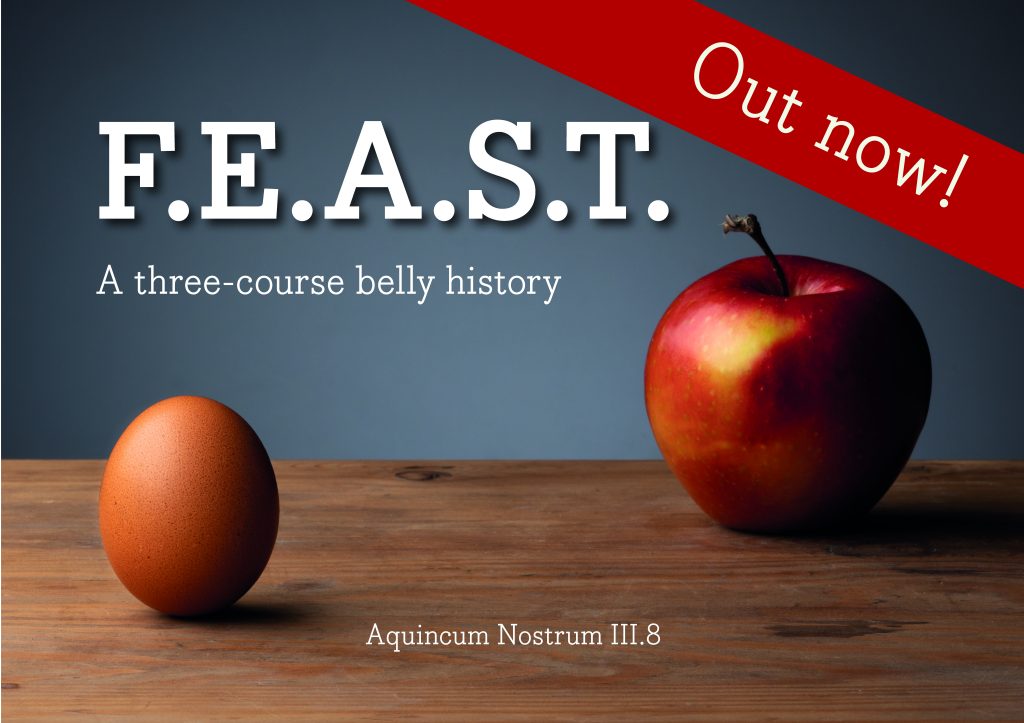Our new book F.E.A.S.T. – A three-course belly history is out now!
“Fat paunches have lean pates, and dainty bits
Make rich the ribs, but bankrupt quite the wits.”
Shakespeare: Love’s Labour’s Lost, Act I, Scene I
The exhibition Features Exciting Alimentary Subjects and Tidbits. Eating takes place every day, or, in fact, in every part of the day. (The only thing more profane than that would be what usually comes afterwards.) Having said that, it is worth chewing over the eating habits of the Romans, if only to rid the world of embarrassing stereotypes. The history of Roman gastronomy, after all, did not begin with quail tongue pâté, colourful orgies and ecstatic vomiting. On our exhibition panels appear the flowers of Roman history, from the puritanical-bellied statesmen of the early times, to the squeamish intellectuals who grew up on the food of the mind, to gourmet cuisine’s genre-creating geniuses, notorious gourmands, inventive chefs and the emperors who knew no limits. And the colourful cavalcade is almost endless: there will be Trojan pigs and countless Roman devourers. Alongside families bearing the names of vegetables and fish, parasitic freeloaders also make an appearance. We also find out what the dinner of tyrants was like, and, to make sure that the other end of the digestive tract is not left out, we even get a glimpse of the etiquette of breaking wind.
Those for whom Roman cuisine does not sit heavy on their stomach can, in the search of comprehensiveness and as counterpoint, also spend a while engrossed in exploring the diets of the prehistoric cultures of the Carpathian Basin and the peoples of the Migration Period. We will learn about the real Palaeolithic diet, the connection between boots and liquids, and when the time of famine foods came and only mussels were on the menu morning, noon and night. (If it was not the diced-up neighbour who ended up being served in the bowl, that is.) Besides Attila’s etiquette, we will also shed light on what meat was doing under the saddle, as beer and kumis flow constantly.
Our overview of the history of nutrition is not intended to be exhaustive – if only because of reasons of space. Although it has its own flow and chronology, the exhibition sets before the visitors a smorgasbord from which all can nibble as they wish.
Lord Longaville is wrong; for this is the kind of feast that leaves the belly empty and makes rich the wits.
The book can be purchased at the Aquincum Museum’s ticket office for 3300 HUF.



